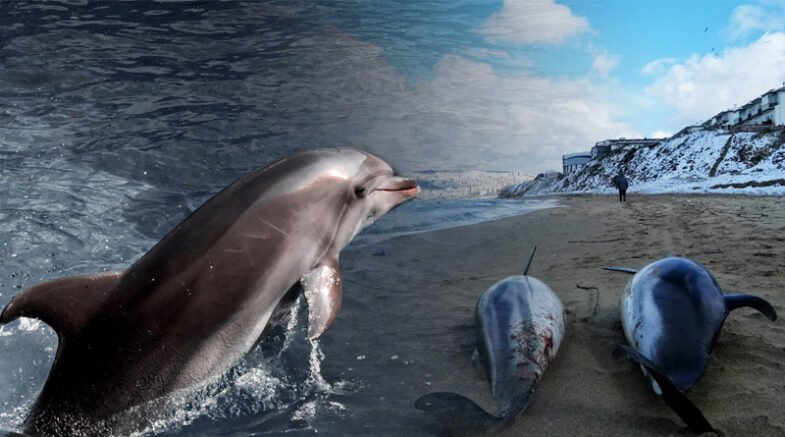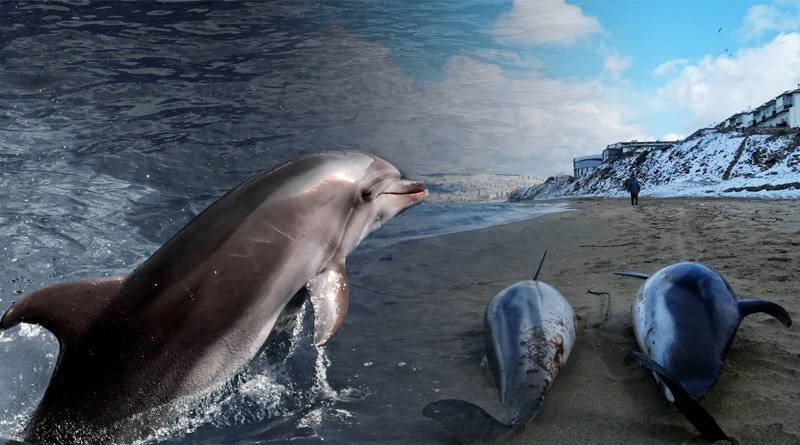The region, a Mediterranean margin sea bordered by Ukraine, Russia, Turkey, Georgia, and Bulgaria, has seen the deaths of tens of thousands of cetaceans.

A “heartbreaking” study claims that the military operations in the Black Sea have led to a sharp increase in the deaths of dolphins and porpoises as a result of the conflict in Ukraine.
The region, a Mediterranean margin sea bordered by Ukraine, Russia, Turkey, Georgia, and Bulgaria, has seen the deaths of tens of thousands of cetaceans.
The research claims the deaths of dolphin and porpoises was released in the Royal Society journal Biology Letters, made this clear. The study’s lead author has consequently issued a warning that these animals might completely vanish from the area.
Millions of silent, non-human victims of war have always occurred. However, the extent of this suffering is frequently hard to measure and frequently overshadowed by the human tragedy. The most recent research makes it abundantly clear that people are not the only ones suffering as a result of the ongoing war but also the deaths of dolphins and porpoises are on rise.
According to Ewa Wgrzyn, a researcher at the University of Rzeszów in Poland, “we wanted to bring attention to the fact that wild animals are not immune to the devastating effects of war, often enduring great suffering and death. Animal suffering during a war is on a massive scale, but the facts are typically unknown for a number of reasons,”
“First of all, the human toll frequently overshadows the plight of other creatures,” she said. “Second, it is very difficult to conduct scientific research while a war is in progress. Third, it can be challenging to monitor some species’ mortality even in times of peace, making it even more difficult to predict what will happen to them in times of conflict.”
Wgrzyn stated that the deaths rate of cetaceans—a family of marine mammals that includes whales, dolphins, and porpoises—caused by conflict has not yet been studied. The only records that are currently available come from investigations into relatively brief military drills, which have been shown to pose a serious threat to many species of cetaceans, according to Wgrzyn.
Ivan Rusev, a scientific staff member of the Tuzlivsky Limany Nature National Park, noticed an increase in the number of deaths of dolphins washed ashore after the outbreak of war.
This was particularly worrying because all three cetacean species found in the Black Sea are listed on the International Union for Conservation of Nature’s Red List of Threatened Species. Węgrzyn and Rusev decided to conduct scientific research to find out how war affects cetaceans and what the scale of the threat is.
The researchers combined a citizen science approach with traditional methods to collect a large dataset over the Black Sea. Citizen science projects involve a group of non-scientist volunteers collecting and submitting data to researchers, who analyze it and interpret the results.
Węgrzyn and his colleagues proposed that other approaches to linking citizen-collected data and scientists may also work. They suggested that scientists may collect information made available on the Internet by many people who do not intentionally participate in a particular project but do share public information on social media.
They also assumed that observing a dolphin stranding is a deeply emotional event for many people, so the probability of eyewitnesses sharing information and/or photographs on social media platforms seemed high.
Researchers collected citizen information on dolphin sightings posted to social media platforms from Ukraine, as well as from other Black Sea countries, and documented 2,500 cetacean corpses that washed up on the Black Sea coast during the three months of their investigation. This approach has the advantage of not requiring volunteer training or the implementation of a complex project, which may not be possible during times of war.
Given that results obtained through citizen science initiatives may not always be as accurate as those gathered through more traditional scientific methods, the researchers also conducted a small-scale study in the Tuzlivsky Limany Nature National Park, located in southern Ukraine.
Wgrzyn and colleagues used a dual strategy to prove that military activities in the Black Sea were responsible for a “significant rise” in cetacean mortality. They identified 2,500 corpses that washed up on the coast during the three months of the investigation using social media data.
The researchers estimated that the 2,500 documented strandings likely represented the deaths of 37,500-48,000 cetaceans in just three months of war, one-sixth to one-fifth of the Black Sea population.
The results of a large-scale social media project and a small-scale scientific investigation in Tuzlivski lymany showed that the number of dead dolphins and porpoises that washed up per kilometer of shoreline is likely to increase in the long term, potentially leading to extinction.
Węgrzyn and colleagues found that cetacean mortality during the war has increased by 9-14 times depending on the location. They also found that many dolphins and porpoises washed ashore had fresh war-related injuries on their bodies, likely caused by explosions caused by mines, naval battles, and shelling of the port of Odesa.
Explosions may cause cetaceans to rapidly ascend to the surface. “Other individuals lost their lives due to decompression sickness, as explosions may cause rapid ascents of cetaceans to the surface,” Węgrzyn said. “Many of them also died due to starvation and hypothermia—individuals had a very thin layer of fat—as sonar destroys their ability to navigate and hunt.”
Sonar technologies affect a part of the dolphin brain known as the melon, which is essential for communication and echolocation. Previous research has shown that sonar signals can disrupt cetacean behavior over distances of up to 90 nautical miles, suggesting that the extended and large-scale military operations during the war may have left little undisturbed space for them in the Black Sea.
Węgrzyn believes that the cetaceans that washed ashore were injured so heavily that it would have been impossible to save them, and that they suffer significantly before they die of injuries inflicted by war.
Dolphins develop self-awareness earlier in life than humans and their intelligence rivals that of the great apes, making them the second smartest creature after humans. This cruelty is similar to human suffering during the war.
